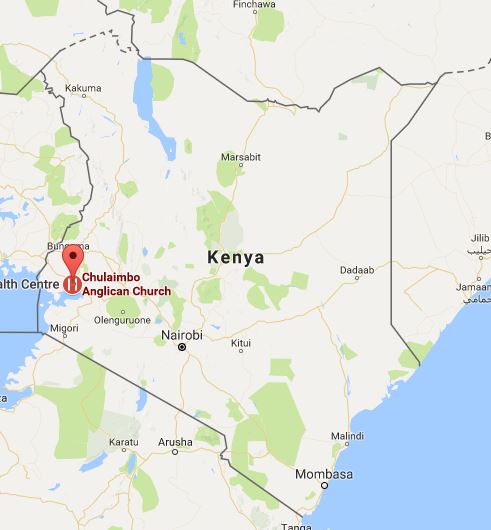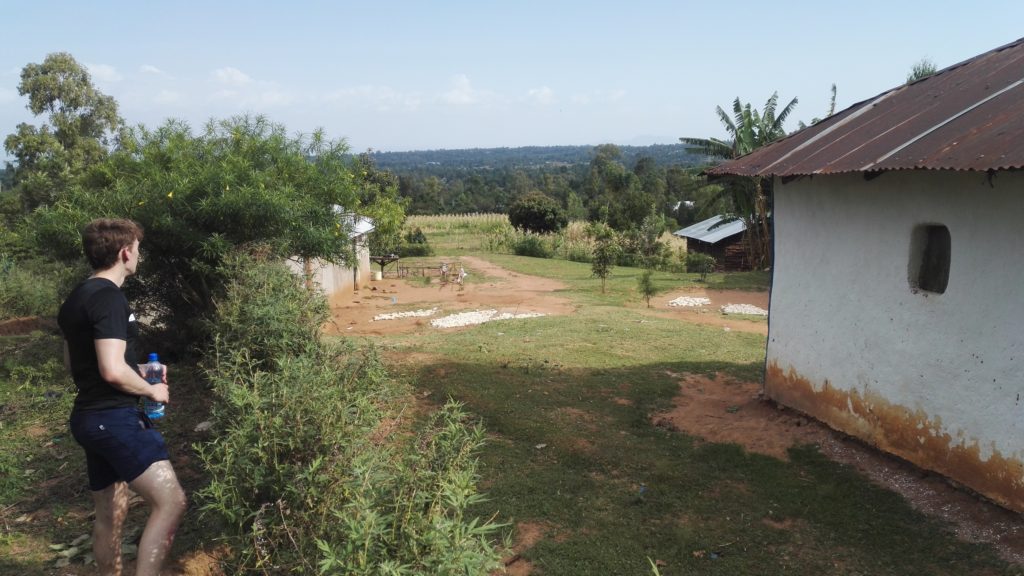I’ve spent the last few days living in a village in Western Kenya.
It’s been an excellent experience that’s not only opened up what’s happening in another part of the country, but also reminded me of some concepts I’ve been reading about recently.
Context
My friend Dan has been over from the UK for his summer hols.
After he said he was pretty open to seeing the country, and Lake Victoria was a part of Kenya I’ve not yet been to, it seemed a prime opportunity to combine the two.
A friend from Nairobi had spoken about her family being from Western Kenya, and so as part of our road trip I saw if there was a possibility to go and stay with them. Margie then put me in touch with Uncle Charles…
Village life
From driving across Kenya, stopping off in the tea growing region, we diverted from the main road which goes onto Uganda, and took the dirt road for Chulaimbo. After a few minutes of driving we were pulling up to Charles’ home.

We were welcomed with a rich, milky, sugary tea and then went for a walk around the village with his second born, who was down for a few days to help construct a second building on their plot of land.
Taking it slow
On the whole, things were same same but different.
The main observation was that there is a general slowness of pace around things happening in the rural setting which I’m not familiar with.
It seems to stem from self-sufficiency.
For most of my adult life I’ve had to think: this month I need to make x because my rent is 0.5x and I have to pay for food, going out etc.
If I’m not doing something to earn money then I may not have somewhere to stay.
In Chulaimbo, and many other rural communities that way of thinking doesn’t apply as much.
People have plots of land that they own, and then buy bricks to construct somewhere to live. For food, there’s a lot in the garden.
Whilst it’s not complete subsistence, there seems to be less urgency to be always be thinking “I need to make x within y time period” which relaxes a lot of the time pressure constraints that come from the more regimented urban life.
Village spending habits
Staying with Charles it was evident that money was being spent.
Not just on bricks to construct a new house for his son in the back garden, nor rice (which they don’t grow themselves), but useful household appliances to make life a bit easier.
The main noticeable ones were thermoflasks for keeping tea/ food warm, solar lights, and a TV. Charles reckoned he was one of the few in the village with the latter, and that ~15% of the village’s 100 families had electricity in their homes.
In the kitchen
On the Tuesday night Dan and I offered to cook a meal (beef stew and mashed potatoes) and so set aside an hour to prepare and serve.
It was two and a half hours before we were able to bring the food out.
This wasn’t necessarily over optimism on our part, but being in a kitchen without some of the set up we were both used to. i.e.
- A sink: several outdoor trips made to dispose of water
- Running water: all collected in buckets from outside
- Light: preparation was done stood by the window
- Multiple knives: one fairly blunt one to get through everything
- Chopping board: different ends of the work top for meat/ veg
- Stove with variable heat: the charcoal fire required attention to avoid burning
- Kettle: prioritisation necessary for hot water
- Peeler: potatoes ended up being coarsely peeled
What’s important to note is that it absolutely was possible to make up a meal for six.
Of course in time we’d probably have developed a system for more efficiently draining the potatoes rather than heading outside to the hedge every time a pot needed to be emptied.
It nevertheless just took a lot longer than it could’ve done because of, for want of a better phrase, lack of technology.
What technology wants
I’ve recently finished a really interesting book by futurist Kevin Kelly about how technology evolves over time.
It takes a very objective view about what technology is and so contending with a blunt knife and a stubborn onion as the light was fading out of the kitchen window, I thought back to the central thesis: if technology makes human life more convenient, it’ll ultimately prevail.
It seemed the kitchens of Chulaimbo had a spectrum of innovations that could be introduced to make things less time consuming, ranging from affordable appliances (potato peeler) to more of an infrastructure level (plumbing for drainage/ running water).
Seeing which products had made it into their home (corrugated iron roof, solar lanterns, plastic chairs) was an interesting demonstration of both the priority with which certain product types are given, and the distribution channels that exist in this post of the world.
Innovate or apply
Dan and I were discussing this whilst walking through the village on one of the afternoons: was I looking to develop new technology, or bring existing technology to the region.
We spotted families leaving their recently harvested maize out in the sun so it could be dried and sold to market.

It was just approaching the first maize harvest of the year, where people get tactical about when to sell, in order to get the best price within the supply and demand dynamics.
If people were able to keep their maize fresh (through, say, refrigeration) then they could wait until everyone else has sold theirs and then release it to the market and receive a higher price.
This is the problem that Inspira Farms are looking to solve with their affordable solar powered cold storage units (you can listen to my podcast interview with them here).
Do you really need a fridge?
Anyway, I was then saying how I met some guys from the States who have developed some potentially paradigm shifting technology whereby food stays fresh by being dipped in a solution without needing to be kept cold.
Their website explains more, but the short version is that food goes “off” because of oxidisation. Reducing the temperature (i.e. put in a fridge) is what we’re used to doing however it’s also possible to achieve this through creating a (natural) membrane around the food to block out the oxygen.
In an environment with high capital costs and inconsistent power, going around and installing expensive, energy-intensive fridges might not new the optimal way to solve the problem of food going off when a technology exists to dunk your maize in (what would feel like) some cheap, sugary water, and get the same result.
All this was to say that, for now at least, there seems to be enough technology “missing” in East Africa that the gap seems to be in the application of already existing technology to businesses and consumers in the countries here.
This is the bit where I can step in: to find creative and sustainable ways in which to get technological improvements working on the ground.
It also lets me off the hook from finding funding for the years of R&D necessary to develop the technology created by the likes of Apeel.
Conclusion
By the weekend we were back to the world of showers and cold drinks, and continuing our road trip towards a lake of flamingos and a national park.
The brief spell we’d spent away from tourist-led experiences (which typically involve showers and cold drinks) permitted us access to a representative view into the lives of everyday Kenyans which I know we are both grateful for.
No doubt experiences like this will feed into how to apply the business concepts that help develop the East African region.